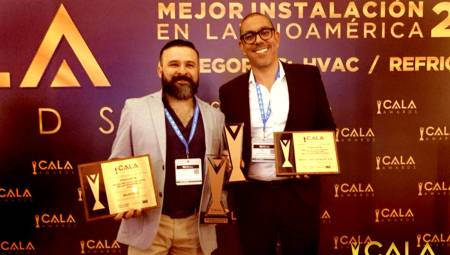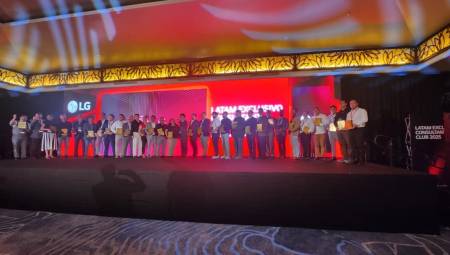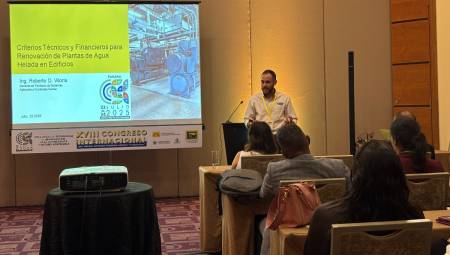By: Alfredo Sotolongo*
 In this opinion column I want to refer to the term that is fashionable in Latin America: sustainable; which can be defined, among other ways, as the pattern of resources that are used to meet human needs while preserving the environment. I have tried to understand the origin of the term and its application and after much questioning, I ended up taking refuge in the dictionary and in different articles on the subject.
In this opinion column I want to refer to the term that is fashionable in Latin America: sustainable; which can be defined, among other ways, as the pattern of resources that are used to meet human needs while preserving the environment. I have tried to understand the origin of the term and its application and after much questioning, I ended up taking refuge in the dictionary and in different articles on the subject.
The historical tour
The term is based on the socio-economic problems facing the world and originated when on 11 December 1987 the Prime Minister of Norway, Gro Brundtland, presented at the Plenary Session of the United Nations a report called "Our Common Future" in which she presented the concept "Sustainable Development".
This term is understood as the use of available tools to meet the social, ecological and economic needs of the present without compromising the ability of future generations to meet their own needs.
On June 2, 1992, the first Earth Summit was held in Rio de Janeiro, organized by the United Nations. In parallel with this, groups of researchers and academics convened another meeting where various works were presented and in which groups of architects concerned with the conservation of the environment had an important participation. This is where Sustainable Architecture comes from. What is meant by Sustainable Architecture? Reference is made to architectural design that seeks the use of natural resources to responsibly minimize the impact on the environment.
This term becomes so popular that I understand that the Royal Spanish Academy agrees to translate the English word "sustainable" as "sustainable" in Spanish. Although in Spain I understand that works are published using that term, in Latin America they have adopted "sustainable".
Since long before this term was used, architects, for whom many in our industry provide their professional services, have always tried to maximize what nature gives us: light, ventilation, etc. They conceive their buildings in such a way that they use sunlight to the maximum, ventilate to cool the environment and reduce artificial heating. Awareness of the use of what nature gives us seems to me to be part of the genetics of most architects.
Every day that passes the concept of sustainable architecture takes root more strongly, in what is ideal is to locate commercial buildings in places where the use of what nature gives us is maximized, materials are used that in their manufacture consume the least amount of energy or that are recycled and this represents a challenge for architects.
This challenge is a product of the fact that investors need to make profitable investments, locating their buildings where the cost of land is more attractive, access for users is easy, the cost of materials reasonable, etc. It is here that the disciplines of engineering come to play an important role to conceive the structures, electrical and mechanical systems that serve these buildings in such a way that they allow to carry out, in a practical and realistic way, the ideas of the architects and at the same time satisfy the needs of the investor.
Since before I graduated in 1967, when I did work while studying, I realized that in our mechanical application industry, since that time the engineers who designed tried to apply systems that represented a saving in energy consumption, keeping the initial cost as low as possible and also offering comfort to the occupants. Definitely, although the term is new, the concept is not.
It is important to understand that everything in this life must maintain a balance, although it is of the utmost importance to protect the environment so that future generations can benefit from the same resources to meet their needs, we must also conceive structures where the initial investment and its cost of operation do not lead to failure to investors. If investors think that by investing in the development of very sustainable buildings they are running the risk of losing their investments since these are not profitable, then instead of putting their money to circulate in the economy they leave it in passive investments where neither architects, nor engineers, nor the country benefit.
References:
United Nations – Report of the World Commission on Environment and Development and Wikipedia.
*About the author
Engineer Alfredo Sotolongo, president of Protec, Inc., is certified as a professional engineer in Puerto Rico and the State of Florida; has more than 40 years of experience in the application and sale of systems and equipment for energy conservation. He is a member of ASME (American Society of Mechanical Engineers), AEE (Association of Energy Engineers), with whom he is certified as an Engineer in Energy Management; he is also a member of ASHRAE and was president of the Miami chapter of that association. He has also presented numerous talks on the subject of energy conservation.













